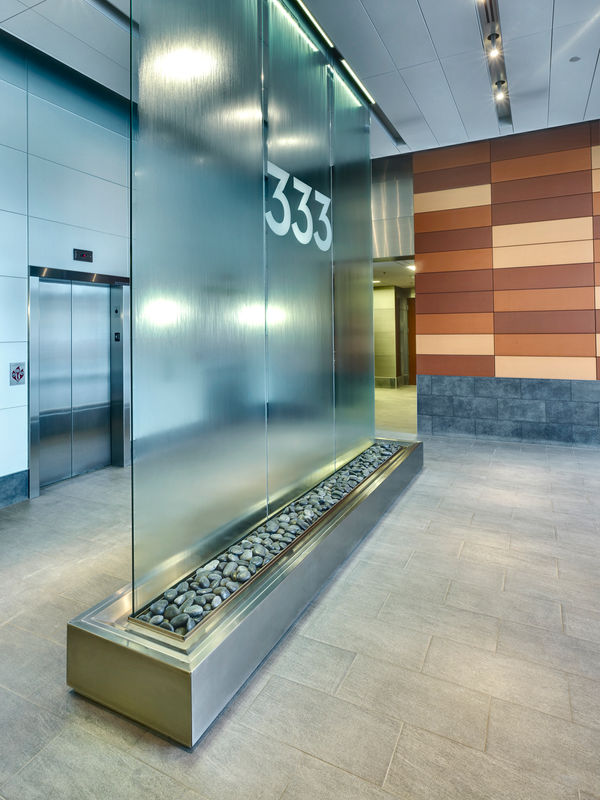
Washington Station
Office Building
LIEU:
Syracuse, NY
TAILLE DU PROJET :
128,000 sf
LEED® Silver Certification Core and Shell
AWARDS:
AIA CNY Chapter Design Award, Commercial/Industrial Category, 2012
Washington Station is an urban infill project located in Syracuse’s Armory Square, a designated Historic District of rejuvenated former warehouse and factory buildings. For the vacant site, the Owner challenged QPK to design a signature contemporary office building reflecting their pride and commitment to the City while respecting the historic district.
The 6-story Class A office building includes 4,300 SF of first floor retail space responding to the cityscape. A hidden challenge of the former train station site was the poor foundation conditions, including underground tunnels and debris, that prevented underground parking. The building program provided 45 on-grade outdoor parking spaces.
The building is steel framed with concrete floors. The building’s exterior uses a light gauge metal and rain screen system that incorporates a combination of metal and terra cotta panels and a glass curtain wall. The design team selected those contemporary materials derived from architectural precedents in the vicinity. The zinc-clad paneling takes design cues from the art-deco National Grid building. The terra cotta panels are a nod to the existing brick buildings with color, height, and window patterns. The punch windows use a combination of four glass colors that create a “mosaic” inspired by Syracuse University’s adaptation of a nearby warehouse.
The design team achieved LEED Silver through many sustainable components, including:
Open-plan interiors with natural light and views available to all occupants;
A vegetated roof improves views from adjacent offices, absorbs storm water, adds insulation to reduce mechanical loads, and reduces the urban heat-island affect;
Reduced potable water use with low-flow and high-efficiency fixtures;
Highly insulated exterior wall assemblies to maximize energy efficiency;
Advanced engineering and energy management technology for significant reductions in energy usage with high-efficiency heating, ventilation, and air conditioning equipment; and
Diverting 95% of the project's construction waste from landfills, including recycling cardboard boxes and wooden pallets.
.png)





